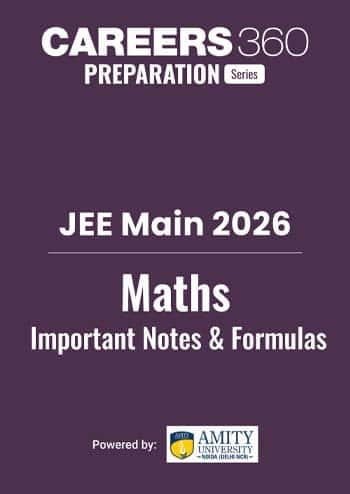Rolle’s Theorem - Practice Questions & MCQ
Quick Facts
-
Rolle’s Theorem is considered one the most difficult concept.
-
Lagrange’s Mean Value Theorem is considered one of the most asked concept.
-
43 Questions around this concept.
Solve by difficulty
If $f(x)$ is continuous and differentiable in [a,b], and $f(a)=f(b)$; then the curve of $\mathrm{y}=\mathrm{f}(\mathrm{x})$ has at least one tangent with scope 0 , for $x \epsilon$
A value of for which conclusion of Mean Value Theorem holds for the function
on the interval
is
For which of the following functions L.M.V.T is applicable in [1, 2]
New: JEE Main 2026 Admit Card Download Link
JEE Main Sample Papers: Physics | Chemistry | Maths | Top 30 Repeated Questions
JEE Main QP & Mock: Previous 10 Year Questions | Chapter Wise PYQs | Mock Test Series
Concepts Covered - 2
Rolle’s Theorem
Let $f$ be a real-valued function defined on the closed interval $[a, b]$ such that
1. it is continuous on the closed interval $[\mathrm{a}, \mathrm{b}]$,
2. it is differentiable on the open interval ( $a$, $b$ ), and
3. $f(a)=f(b)$.
There then exists at least one $c \in(a, b)$ such that $f^{\prime}(c)=0$.
Geometrical interpretation of Rolle's Theorem: are equal. Then there exists at least one point $(c, f(c))$ lying between $A$ and $B$ on the curve $y=f(x)$ where the tangent is parallel to the $x$-axis. I.e. $f^{\prime}(c)=0$.

roots of the equation $f^{\prime}(x)=0$, there exists at least one root of the equation $f^{\prime}(x)=0$ and so on.
Note:
The converse of Rolle's theorem need not be true.
For example,
Let $f(x)=x^3-x^2-x+1$ in the interval $[-1,2]$
$
\begin{aligned}
f^{\prime}(x) & =3 x^2-2 x-1 \\
f^{\prime}(1) & =3(1)^2-2(1)-1=0
\end{aligned}
$
but $\mathrm{f}(-1) \neq \mathrm{f}(2)$
Application of Rolle's Theorem:
We can use Rolle's theorem to study and calculate the root of the equation as well as locate the roots, The equation must be continuous as well as differentiable.
Let's look at one example.
Consider the equation $f(x)=(x-1)(x-2)(x-3)(x-4)$. Then how many roots of the equation $f^{\prime}(x)=0$ are positive?
Let $f(x)=(x-1)(x-2)(x-3)(x-4)$.
Since, $f(x)$ is continuous and differentiable and $f(1)=f(2)=f(3)=f(4)=0$
According to Rolle's theorem, there is at least one root of the equation $f^{\prime}(x)=0$ in each of the intervals $(1,2),(2,3)$ and $(3,4)$.
Since, $f^{\prime}(x)$ is a cubic function. So $f^{\prime}(x)=0$ has exactly one root in each interval $(1,2),(2,3)$ and $(3,4)$
Lagrange’s Mean Value Theorem (LMVT)
Lagrange's Mean Value Theorem generalized Rolle’s theorem by considering functions that do not necessarily have equal value at the endpoints.
Statement
Let $f(x)$ be a function defined on $[a, b]$ such that
1. it is continuous on [a, b],
2. it is differentiable on (a, b).
Then there exists at least one real number $c \in(a, b)$ such that.
$
f^{\prime}(c)=\frac{f(b)-f(a)}{b-a}
$
Geometrical Interpretation:

Study it with Videos
"Stay in the loop. Receive exam news, study resources, and expert advice!"














